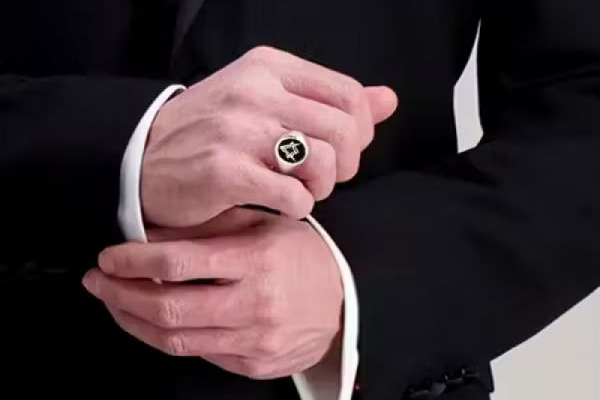The Meaning of Masonic Rings

If there’s a piece of regalia that’s equally as fascinating as it is mysterious, it’s the Masonic ring. Some Freemasons wear them to show their dedication while others wear them to promote the organisation out in the world. Many associate them with the same level of commitment as a wedding ring.
This guide will walk you through the meanings of Masonic rings, common symbols engraved or embossed on them, and the best ways to wear yours.
Who can wear a Masonic ring?
There is no rule that restricts members from purchasing a Masonic ring or accepting one as a gift. Some brothers may purchase one following their year as Worshipful Master or after they join an appendant body. Others may select one as soon as they’re accepted into Craft Masonry. The choice belongs to the wearer and the wearer alone.
Types of Masonic rings
Aside from neckties and breast jewels, Freemasons’ rings are perhaps the most common piece of regalia. This also means that each ring comes with a wide range of meanings and significance.
Note: Though numerous pieces of regalia are presented to lodge members (especially Master Masons), a ring is not typically one of them. Two official Freemason rings are, however, presented to members of the Scottish Rite’s remarkable 14th and 33rd degrees.
Square & Compass

Crafted in Hallmark silver, our Craft Masonic ring incorporates the square & compass symbol into a chainmail-like pattern.
As we stated earlier, the most popular Masonic symbol is the square and compass which represent integrity and wisdom. Also referred to as a Blue Lodge ring, it’s the most commonly used design in Freemasonry. You’ll often see a “G” engraved within the head, representing “geometry.”
Reversible

This Royal Arch swivel ring is fashioned in 9ct gold. Featuring the Royal Arch set in red vitreous enamel, the reverse side can be engraved with any number of details
.
Historically, being a member of the brotherhood required a certain level of secrecy. Therefore, reversible rings (also called swivel or flip rings) became a popular means of keeping tradition close “at hand” while keeping a member’s allegiance under wraps.
Signet

Featuring an inlay of a square and compass and flanked by acacia leaves, our 9ct gold signet ring honours the rich history of Freemasonry.
The most traditional Mason’s ring comes in the form of a signet band. Typically carved with letters or a unique design (such as a family crest), these “gentleman’s rings” were used to verify authenticity by pressing wax into envelopes. This acted as a personal signature and ensured security for private matters.
How to wear a Masonic ring

During the earliest dates of Freemasonry, only the upper-class and aristocracy were allowed to wear elaborately-designed signet rings. With the rise of the merchant class, simple Masonic rings began to be worn as an identifier of position and an allegiance to the brotherhood
Nowadays, many brothers wear rings for special occasions but others might choose to wear them every day. While there isn’t a mandatory set of rules, members are typically follow the following protocol:
- Most Freemasons wear rings on their pinky rings.
- Unmarried brothers may wear rings on wedding fingers.
- Unmarried and married members may wear them on right-hand middle fingers.
A note about square & compass symbols
If you’re a new member who wears a ring emblazoned with a compass, be sure that its points face away from you. Master members who have made the necessary commitments to Freemasonry may wear their ring with the points turned outward.
Where to purchase the finest Masonic rings

From the time they’re handcrafted in Birmingham’s Jewellery Quarter to the point they’re carefully shipped to our clients, each piece of regalia is kept within the Online Masonic Regalia team. As a leading manufacturer and purveyor of Freemasonry jewellery, we’re happy to assist you in selecting your Freemason ring. Please contact one of our customer service representatives to start the process.

